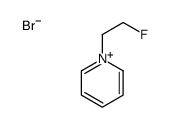762-49-2
| Name | 1-Bromo-2-fluoroethane |
|---|---|
| Synonyms |
MFCD00039285
EINECS 212-100-3 1-Bromo-2-fluoroethane 1-Fluoro-2-bromoethane Ethane, 1-bromo-2-fluoro- |
| Density | 1.6±0.1 g/cm3 |
|---|---|
| Boiling Point | 69.3±8.0 °C at 760 mmHg |
| Molecular Formula | C2H4BrF |
| Molecular Weight | 126.956 |
| Flash Point | -1.1±0.0 °C |
| Exact Mass | 125.948036 |
| LogP | 1.21 |
| Vapour Pressure | 146.8±0.1 mmHg at 25°C |
| Index of Refraction | 1.395 |
Synonym:2-Fluoroethyl bromide; 2-Bromofluoroethane Section 2 - COMPOSITION, INFORMATION ON INGREDIENTS
Risk Phrases: 11 28 36/37/38 59 Section 3 - HAZARDS IDENTIFICATION EMERGENCY OVERVIEW
Highly flammable. Very toxic if swallowed. Irritating to eyes, respiratory system and skin. Dangerous for the ozone layer. Potential Health Effects Eye: Causes eye irritation. Skin: Causes skin irritation. May be harmful if absorbed through the skin. Prolonged or repeated contact may dry/defat the skin and cause irritation. Ingestion: May be fatal if swallowed. Inhalation: Harmful if inhaled. Causes respiratory tract irritation. Chronic: No information found. Section 4 - FIRST AID MEASURES Eyes: In case of contact, immediately flush eyes with plenty of water for at least 15 minutes. Get medical aid. Skin: In case of contact, immediately flush skin with plenty of water for at least 15 minutes while removing contaminated clothing and shoes. Get medical aid immediately. Wash clothing before reuse. Ingestion: Call a poison control center. If swallowed, do not induce vomiting unless directed to do so by medical personnel. Never give anything by mouth to an unconscious person. Get medical aid. Inhalation: If inhaled, remove to fresh air. If not breathing, give artificial respiration. If breathing is difficult, give oxygen. Get medical aid. Notes to Physician: Patients with fluorohydrocarbon poisoning should not be given epinephrine or similar drugs because of the tendency of fluorohydrocarbon to induce cardiac arrhythmia, including ventricular fibrillation. Antidote: None reported. Section 5 - FIRE FIGHTING MEASURES General Information: As in any fire, wear a self-contained breathing apparatus in pressure-demand, MSHA/NIOSH (approved or equivalent), and full protective gear. During a fire, irritating and highly toxic gases may be generated by thermal decomposition or combustion. Use water spray to keep fire-exposed containers cool. Flammable liquid and vapor. Vapors are heavier than air and may travel to a source of ignition and flash back. Vapors can spread along the ground and collect in low or confined areas. Extinguishing Media: Use water spray, dry chemical, carbon dioxide, or chemical foam. Section 6 - ACCIDENTAL RELEASE MEASURES General Information: Use proper personal protective equipment as indicated in Section 8. Spills/Leaks: Absorb spill with inert material (e.g. vermiculite, sand or earth), then place in suitable container. Clean up spills immediately, observing precautions in the Protective Equipment section. Remove all sources of ignition. Use a spark-proof tool. Provide ventilation. A vapor suppressing foam may be used to reduce vapors. Approach spill from upwind. Section 7 - HANDLING and STORAGE Handling: Wash thoroughly after handling. Use with adequate ventilation. Ground and bond containers when transferring material. Use spark-proof tools and explosion proof equipment. Avoid breathing dust, vapor, mist, or gas. Avoid contact with eyes, skin, and clothing. Empty containers retain product residue, (liquid and/or vapor), and can be dangerous. Keep container tightly closed. Avoid ingestion and inhalation. Do not pressurize, cut, weld, braze, solder, drill, grind, or expose empty containers to heat, sparks or open flames. Storage: Keep away from heat, sparks, and flame. Keep away from sources of ignition. Store in a tightly closed container. Store in a cool, dry, well-ventilated area away from incompatible substances. Flammables-area. Section 8 - EXPOSURE CONTROLS, PERSONAL PROTECTION Engineering Controls: Facilities storing or utilizing this material should be equipped with an eyewash facility and a safety shower. Use adequate ventilation to keep airborne concentrations low. Exposure Limits CAS# 762-49-2: Personal Protective Equipment Eyes: Wear chemical splash goggles. Skin: Wear appropriate protective gloves to prevent skin exposure. Clothing: Wear appropriate protective clothing to prevent skin exposure. Respirators: A respiratory protection program that meets OSHA's 29 CFR 1910.134 and ANSI Z88.2 requirements or European Standard EN 149 must be followed whenever workplace conditions warrant respirator use. Section 9 - PHYSICAL AND CHEMICAL PROPERTIES Physical State: Liquid Color: pale yellow Odor: Typical organohalide odor. pH: Not available. Vapor Pressure: Not available. Viscosity: Not available. Boiling Point: 71 - 72.5 deg C @ 760 mm Hg Freezing/Melting Point: Not available. Autoignition Temperature: Not available. Flash Point: -1 deg C ( 30.20 deg F) Explosion Limits, lower: Not available. Explosion Limits, upper: Not available. Decomposition Temperature: Solubility in water: Specific Gravity/Density: 1.7050 g/cm3 Molecular Formula: C2H4BrF Molecular Weight: 126.96 Section 10 - STABILITY AND REACTIVITY Chemical Stability: Stable under normal temperatures and pressures. Conditions to Avoid: Ignition sources, excess heat, confined spaces. Incompatibilities with Other Materials: Strong oxidizing agents, strong bases, magnesium. Hazardous Decomposition Products: Carbon monoxide, irritating and toxic fumes and gases, carbon dioxide, hydrogen fluoride gas, hydrogen bromide. Hazardous Polymerization: Has not been reported. Section 11 - TOXICOLOGICAL INFORMATION RTECS#: CAS# 762-49-2: KH6610000 LD50/LC50: CAS# 762-49-2: Oral, rat: LD50 = 5 mg/kg; Skin, rabbit: LD50 = >20 mg/kg. Rat LCLo inhalation; dose: 11 ppm/4H. Carcinogenicity: 1-Bromo-2-fluoroethane - Not listed by ACGIH, IARC, or NTP. Other: See actual entry in RTECS for complete information. Section 12 - ECOLOGICAL INFORMATION Section 13 - DISPOSAL CONSIDERATIONS Dispose of in a manner consistent with federal, state, and local regulations. Section 14 - TRANSPORT INFORMATION IATA Shipping Name: FLAMMABLE LIQUID, TOXIC, N.O.S.* Hazard Class: 3 UN Number: 1992 Packing Group: I IMO Shipping Name: FLAMMABLE LIQUID, TOXIC, N.O.S. Hazard Class: 3.2 UN Number: 1992 Packing Group: I RID/ADR Shipping Name: FLAMMABLE LIQUID, TOXIC, N.O.S. Hazard Class: 3 UN Number: 1992 Packing group: I Section 15 - REGULATORY INFORMATION European/International Regulations European Labeling in Accordance with EC Directives Hazard Symbols: T+ F N Risk Phrases: R 11 Highly flammable. R 28 Very toxic if swallowed. R 36/37/38 Irritating to eyes, respiratory system and skin. R 59 Dangerous for the ozone layer. Safety Phrases: S 16 Keep away from sources of ignition - No smoking. S 26 In case of contact with eyes, rinse immediately with plenty of water and seek medical advice. S 37/39 Wear suitable gloves and eye/face protection. S 59 Refer to manufacturer/supplier for information on recovery/recycling. WGK (Water Danger/Protection) CAS# 762-49-2: 3 Canada None of the chemicals in this product are listed on the DSL/NDSL list. CAS# 762-49-2 is not listed on Canada's Ingredient Disclosure List. US FEDERAL TSCA CAS# 762-49-2 is not listed on the TSCA inventory. It is for research and development use only. SECTION 16 - ADDITIONAL INFORMATION N/A |
| Hazard Codes | Xi,N,T+,F |
|---|---|
| Risk Phrases | R11 |
| Safety Phrases | 16-26-33-36/37/39-59-45-36/37-28 |
| RIDADR | UN 1992 |
| RTECS | KH6610000 |
| Packaging Group | II |
| Hazard Class | 3.1 |
| Precursor 10 | |
|---|---|
| DownStream 10 | |
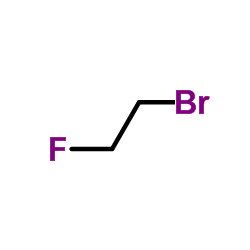

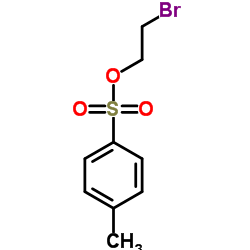



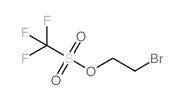


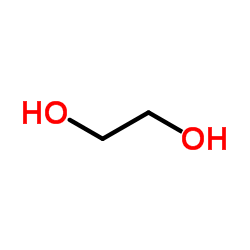
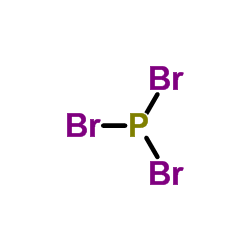
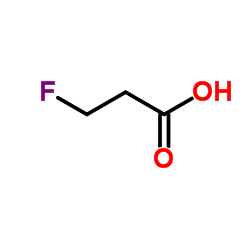
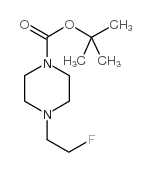

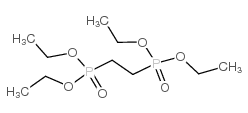


![8-AZABICYCLO[3.2.1]OCTANE-2-CARBOXYLIC ACID, 8-(2-FLUOROETHYL)-3-(4-IODOPHENYL)-, METHYL ESTER, (1R, 2S, 3S, 5S)- structure](https://image.chemsrc.com/caspic/013/155798-01-9.png)


